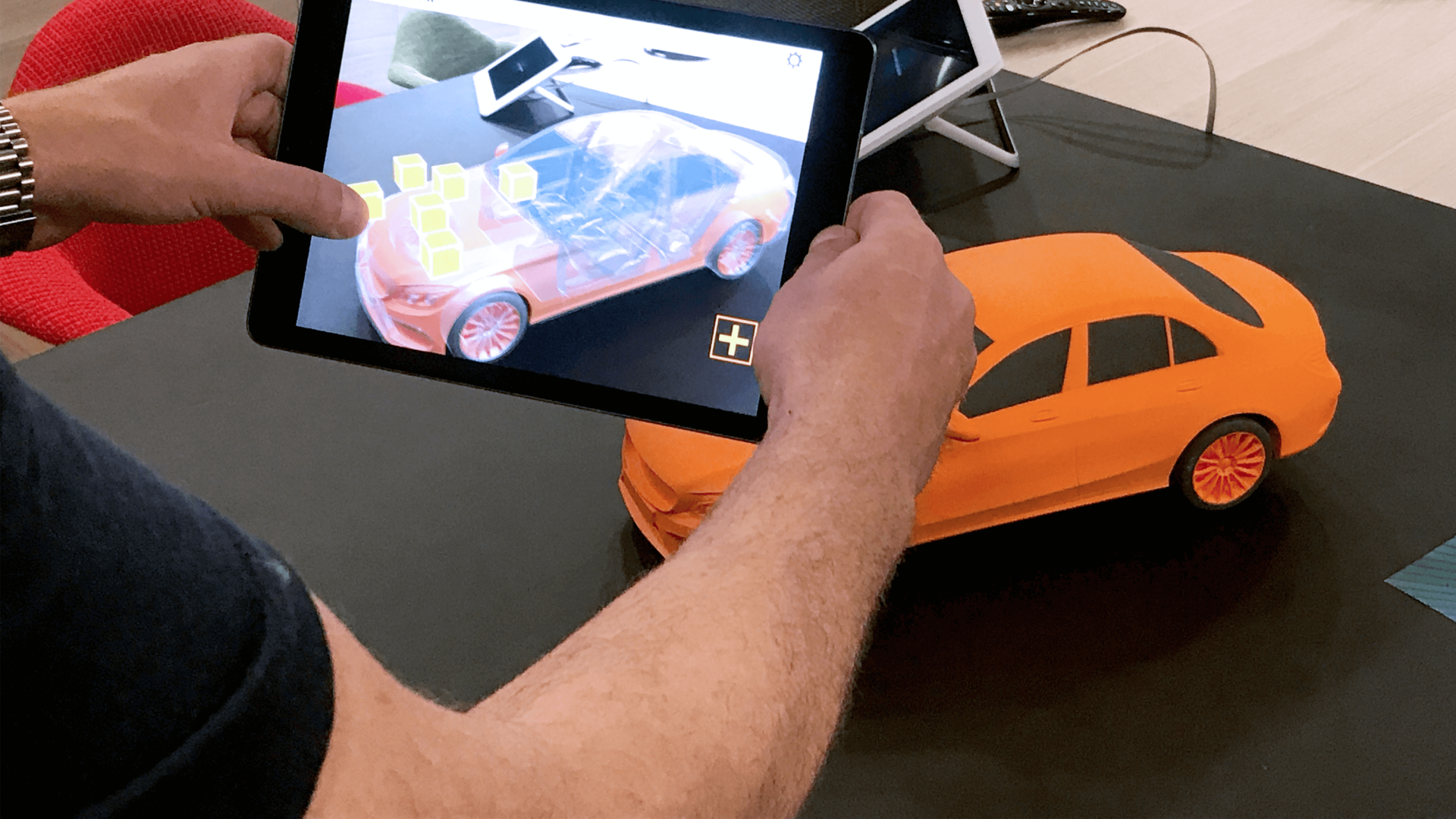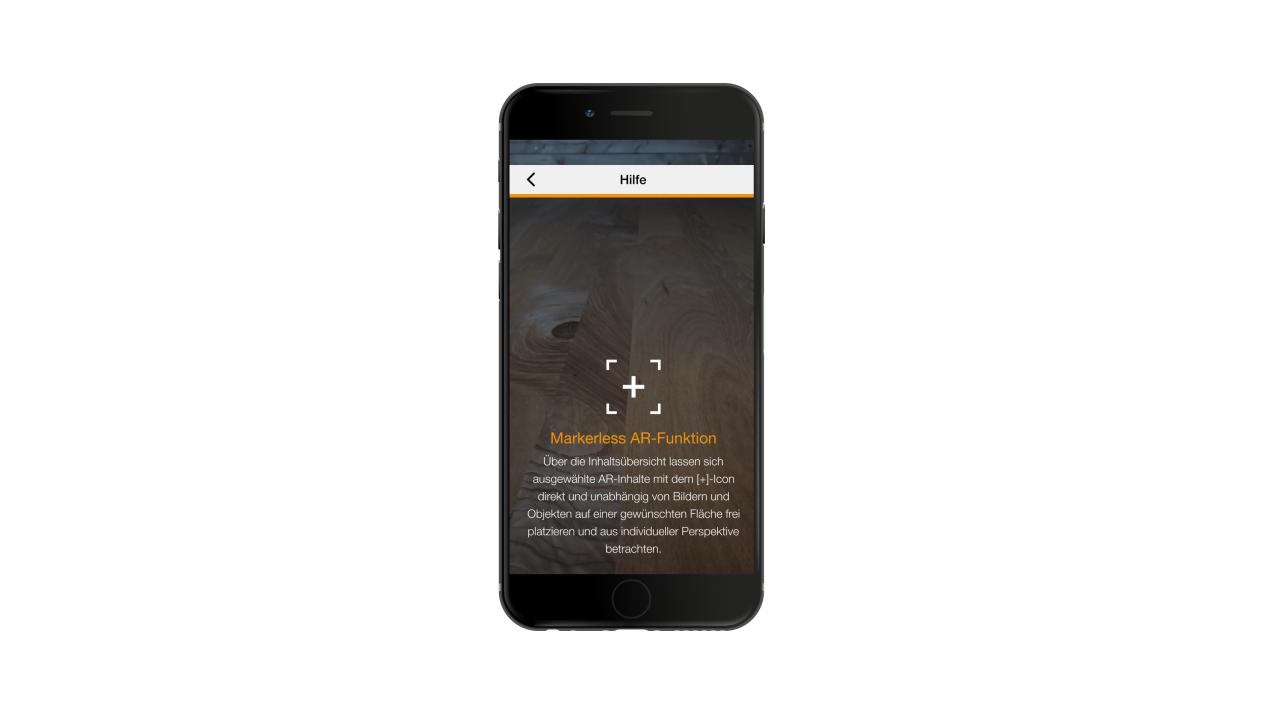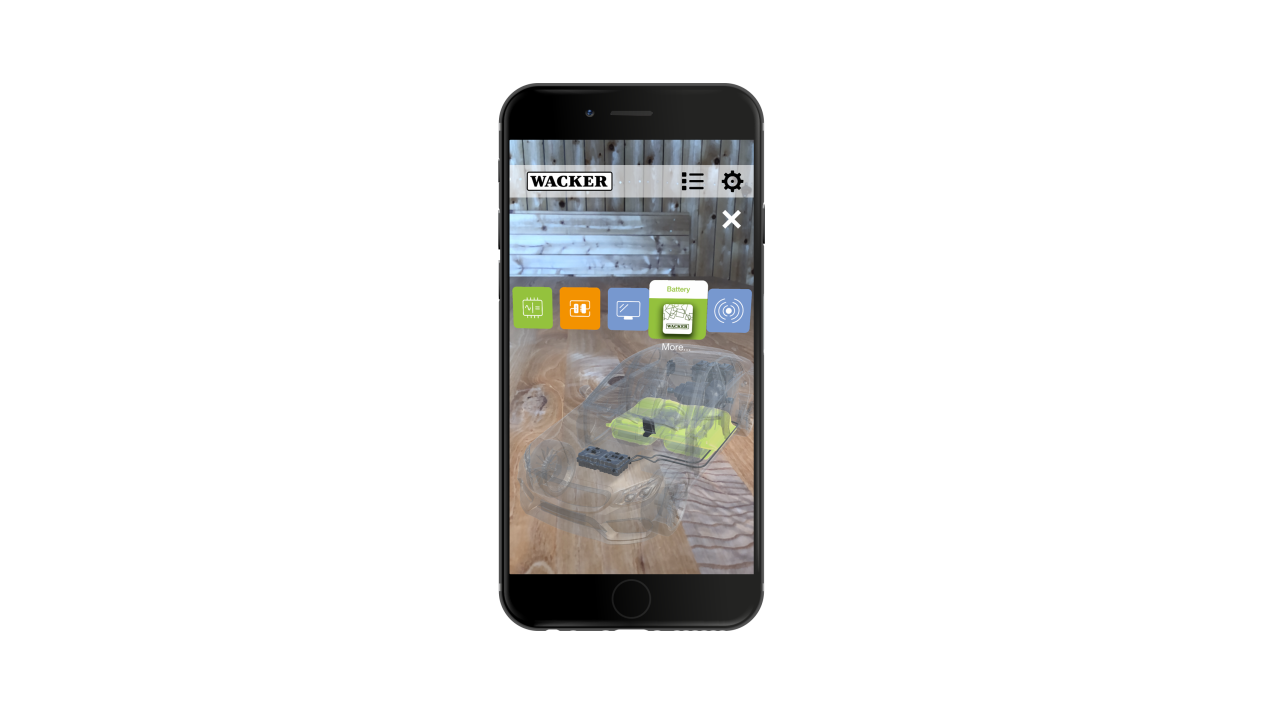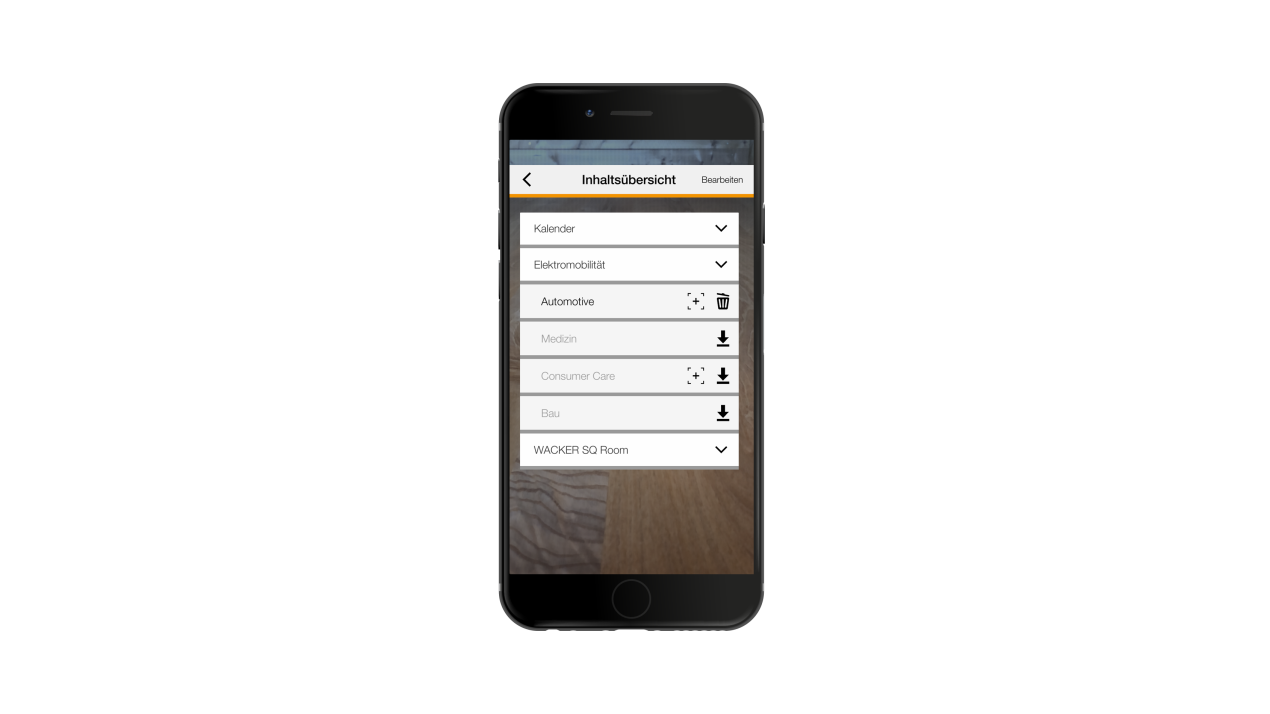Definition, features and applications: an overview
AR, VR and MR are commonly used terms – but they are often confused, mixed up or misunderstood. Here we unravel the meanings. Starting with augmented reality!
What is it?
1
Augmented reality – enhancing the real world
Augmented reality is a technology that enhances the real world with digital information, in three dimensions and in real time. This information may be in the form of texts, videos, animations or 3D objects. The live camera image on a smartphone or tablet is supplemented with virtual elements that appear on the display. Instead of consuming in a passive way, users become active – and this opens up entirely new possibilities for marketing, sales and trading!
How does it work?
2
Option 1: Marker-based AR
Markers are visual triggers that are identified by the camera of the mobile device and activate the display of the additional virtual information. Markers can vary widely and may take the form of pictures, icons, graphics in a brochure, labels on a component or other small objects.
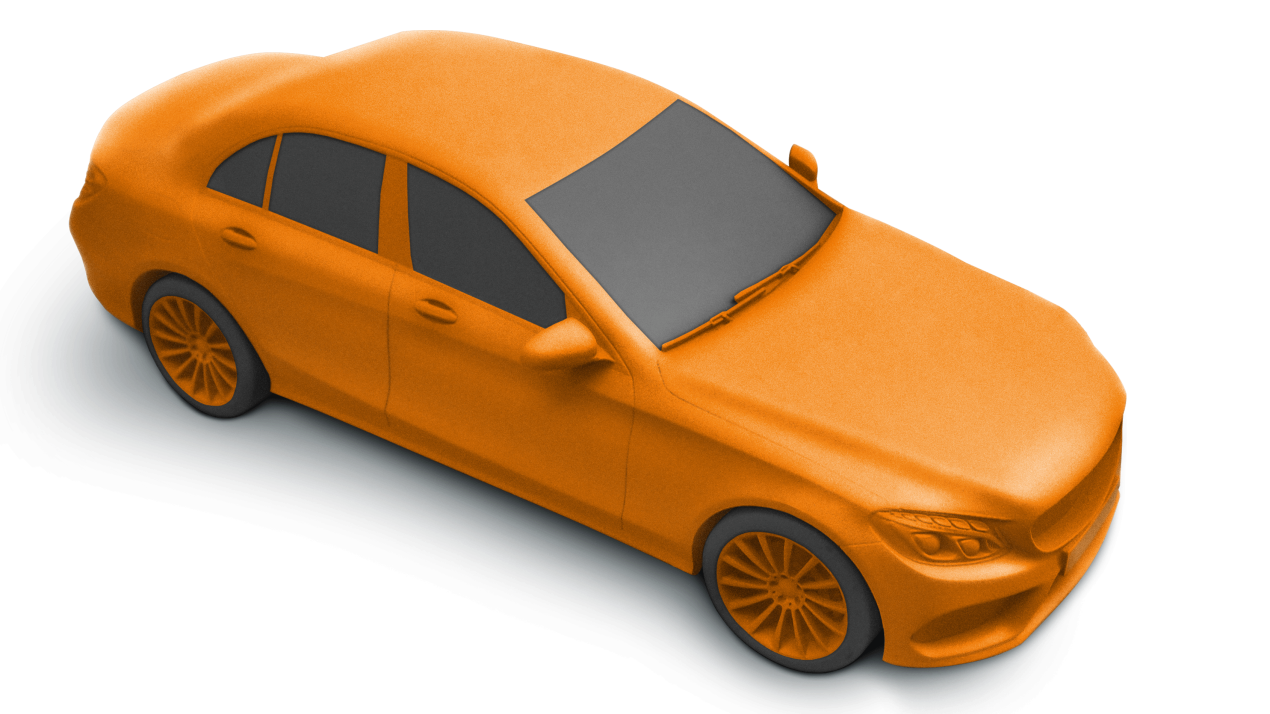
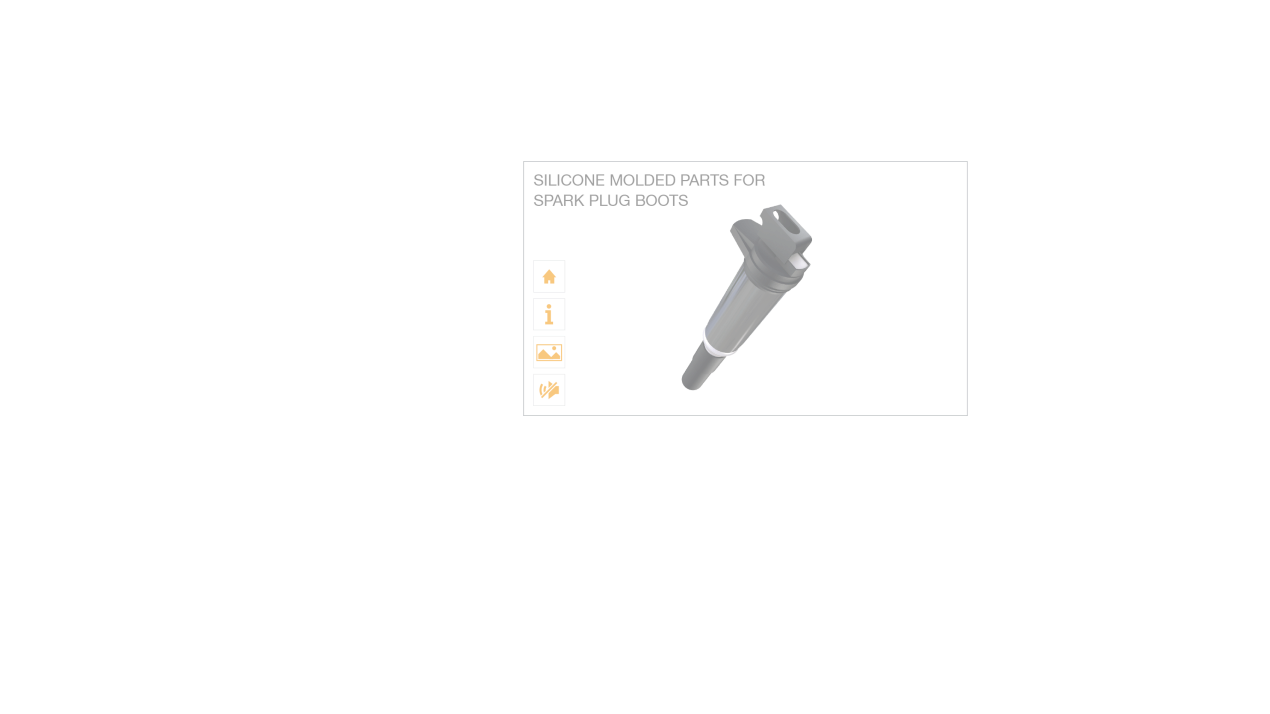
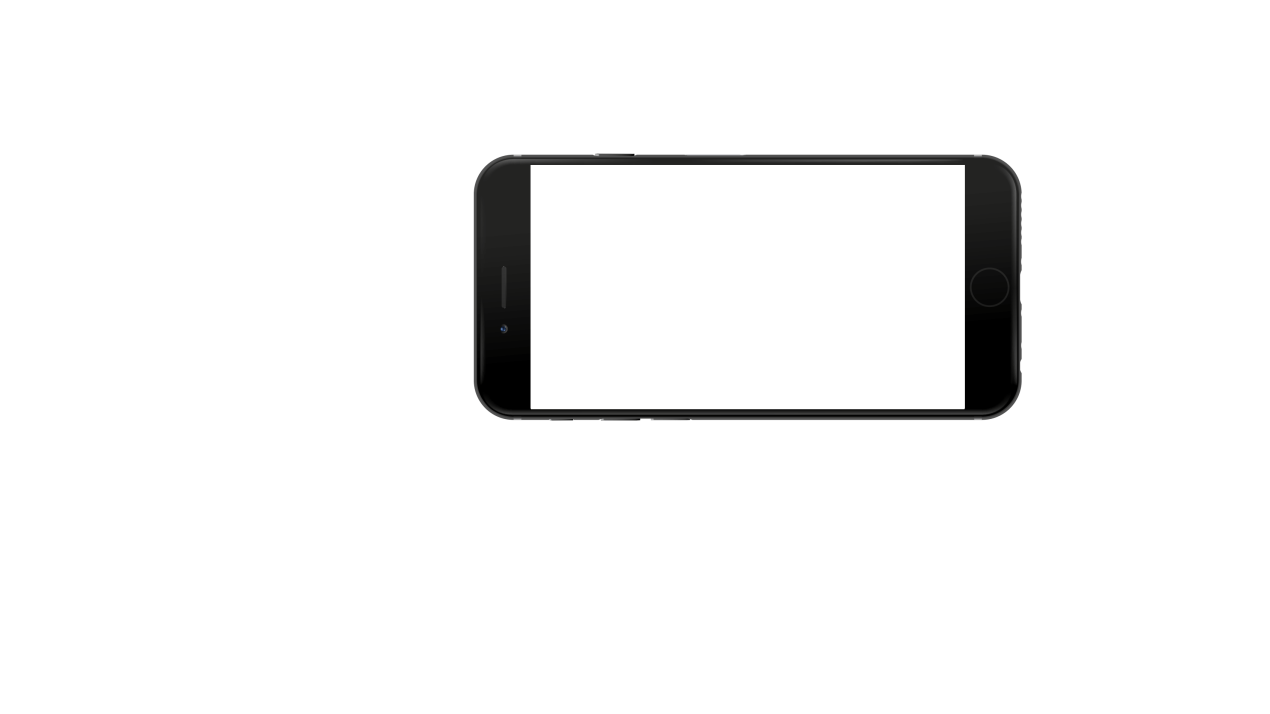
Option 2: Markerless-AR
Markerless AR works without the addition of visual markers. In this case, the camera on the smartphone or tablet starts by capturing and identifying the surface structure on which the object will be placed (this could be a desk or a virtual exhibit on a stand or the wall of a meeting room). The object then appears on the display of the mobile device.
The app as a platform for AR content
All that is needed to access AR content is an app on the smartphone or tablet; whether this is done online or offline simply depends on the data volume.
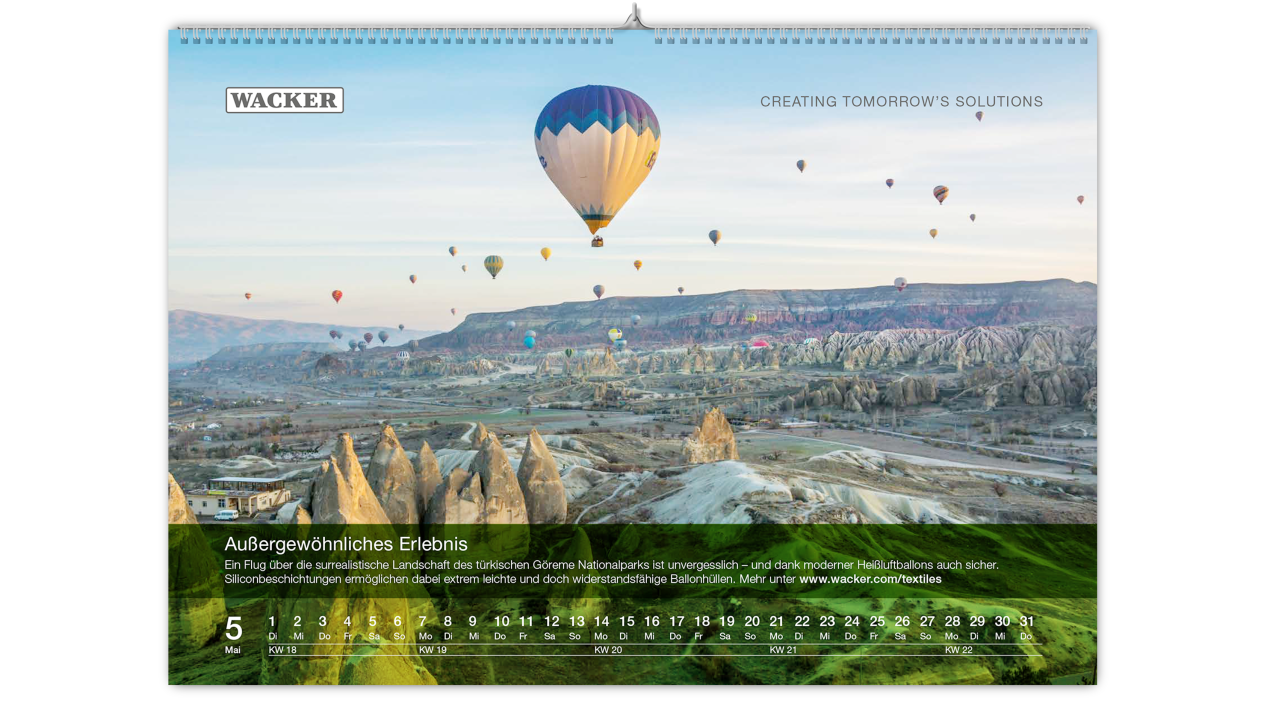
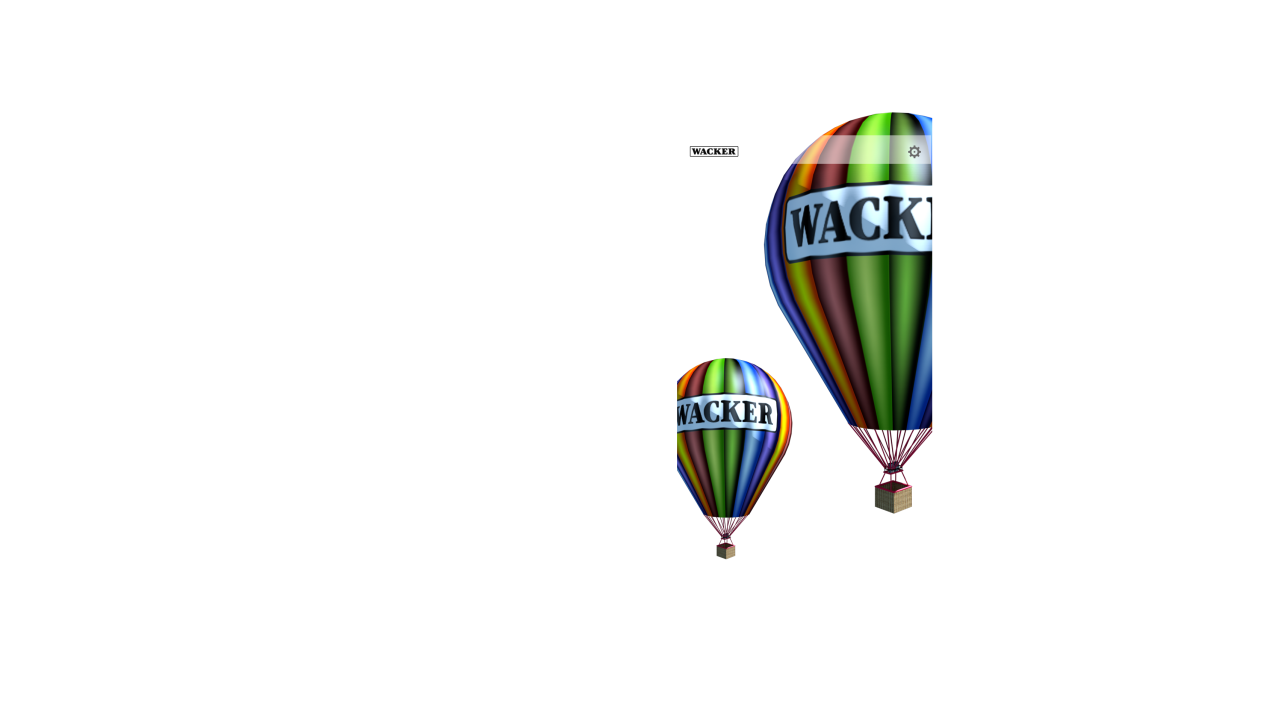
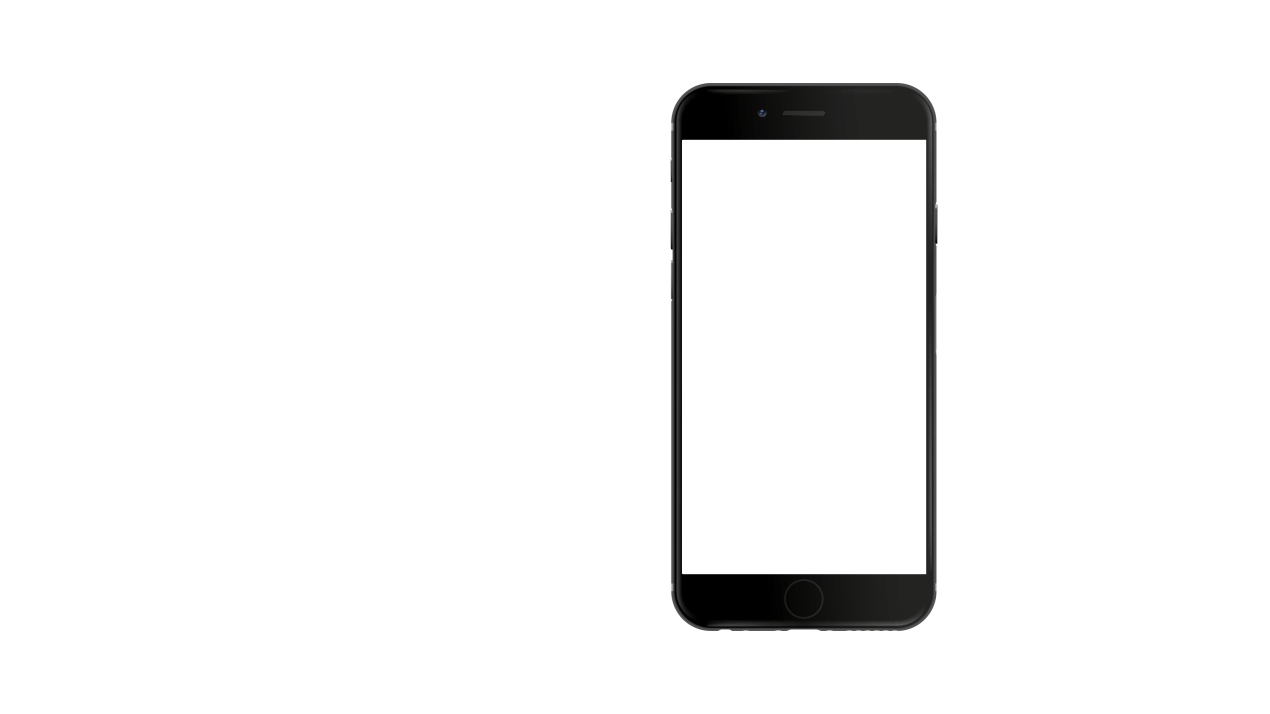
What are the uses?
3
If you want to convince your customers, partners or employees of the benefits of your brand or product, you need to put forward strong arguments – selling points that also supply visual details.
The initial approach – AR is fun
The fun factor is part of the package: to accept the technology, AR users must start by getting familiar with the various possibilities, interacting with the device experimentally and experiencing the technology for themselves. Moving and manipulating objects or placing new ones, accessing films and animations ... it’s called gamification, and it’s all about having fun!
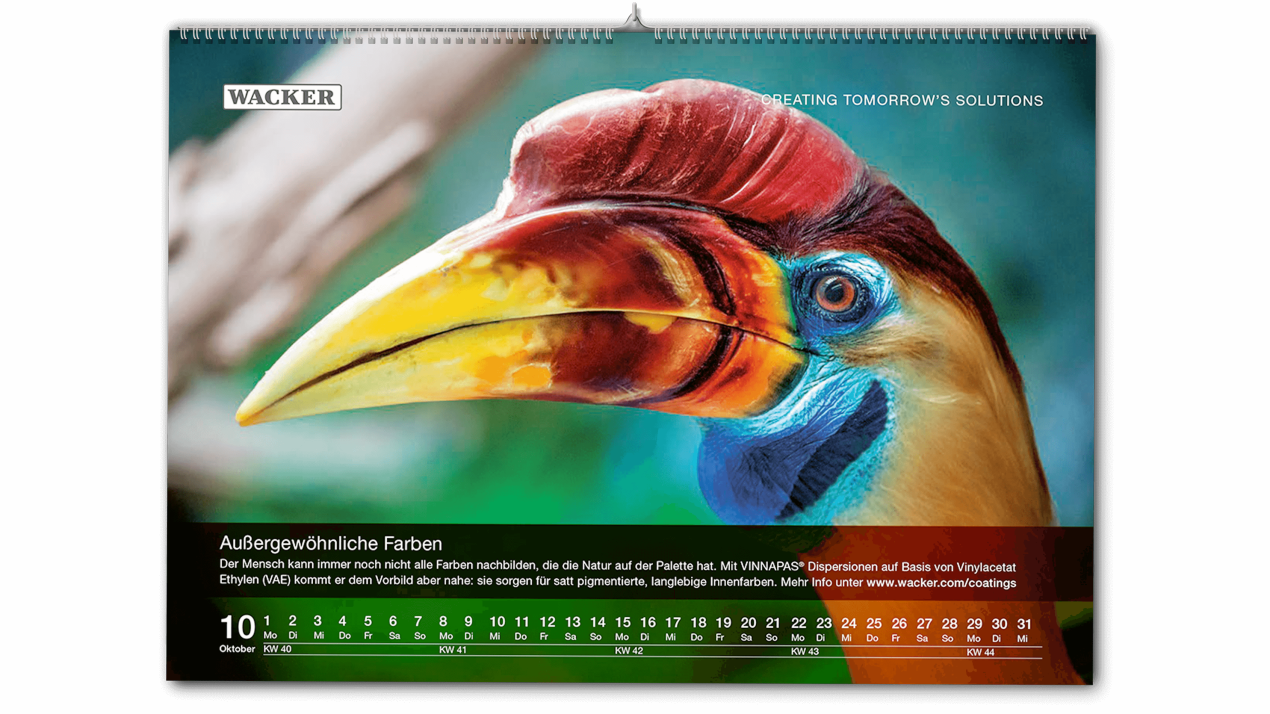
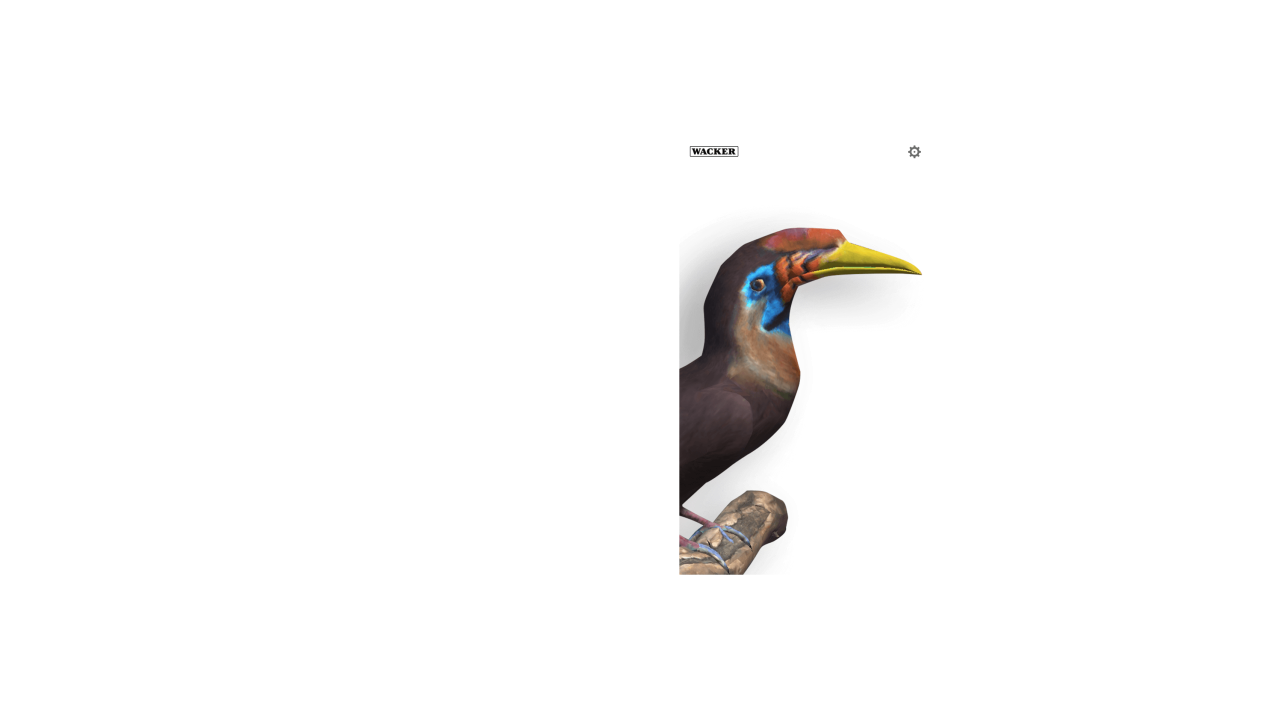

Education – teaching, learning and training with AR
Digital education becomes clearer and more tangible. Processes are animated and superimposed onto the real-life object; users trigger actions and set the pace.
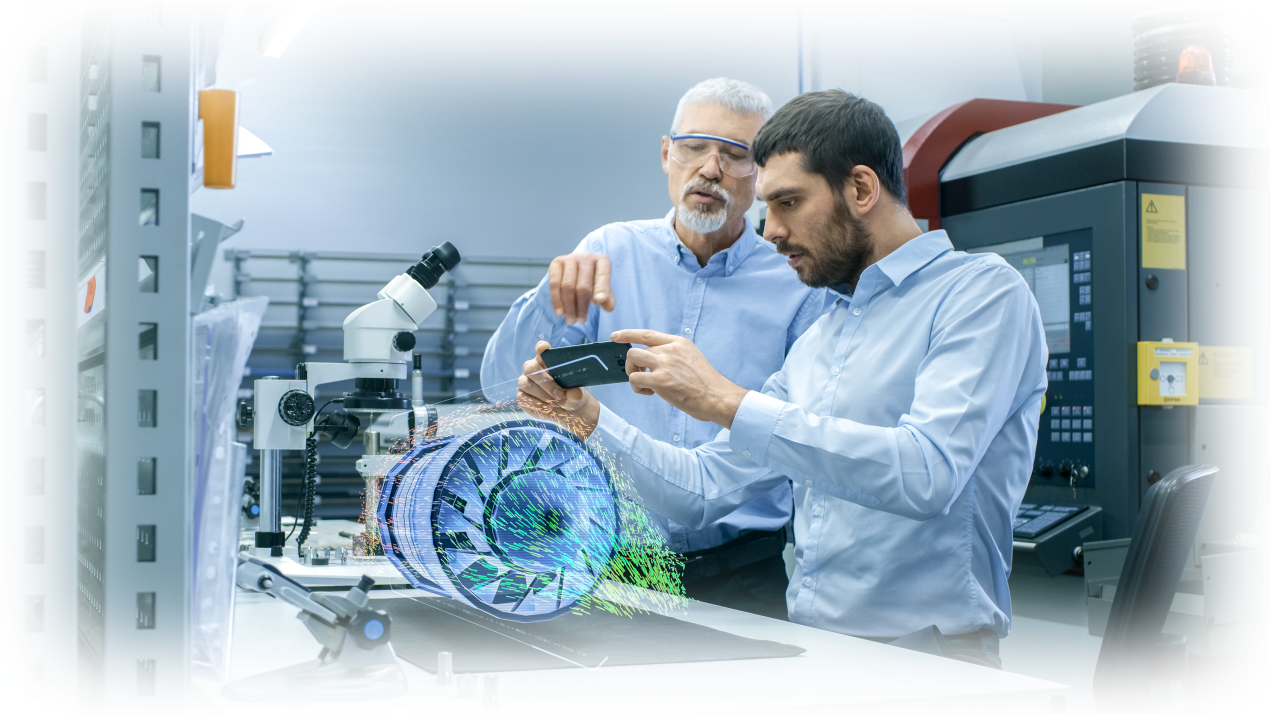
Maintenance support – AR expands operating guides and assembly instructions
What kind of oil should I refill? Where is the hydraulic power unit? What torque is needed to tighten a screw? Virtual maintenance and repair tips can be accessed on site, directly on the machine or component, for example.
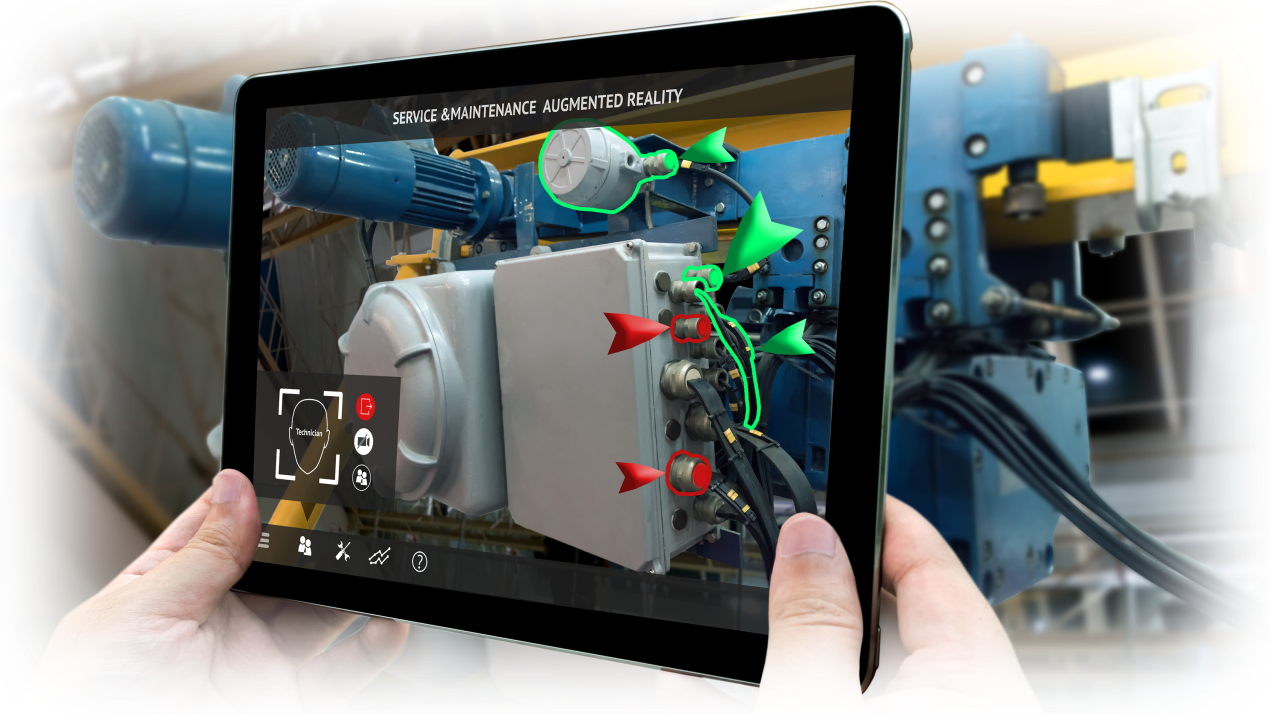
Convincing arguments – impress your clients with AR
Present selling points that surprise and convince: AR makes the invisible visible and offers brand new insights into products. Machinery and components become transparent, parts are labelled, and X-ray views of complex objects are displayed. By accessing these selling points for themselves, customers are motivated to make contact.
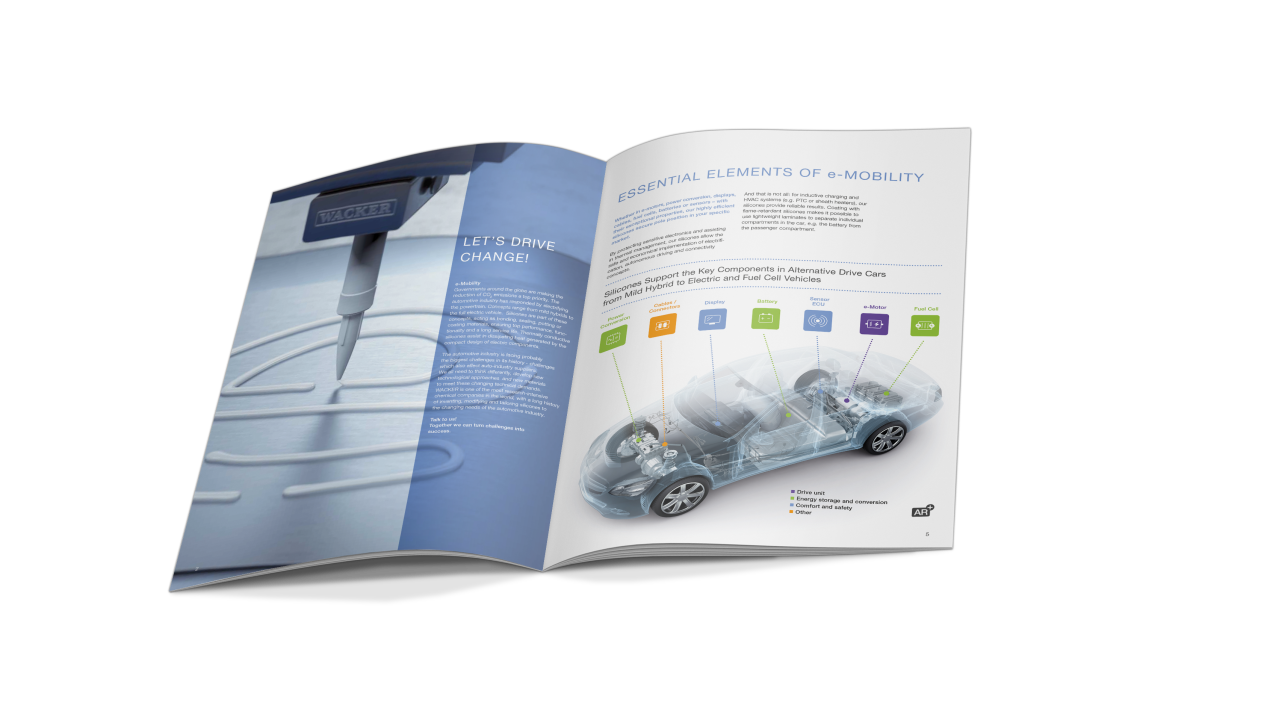
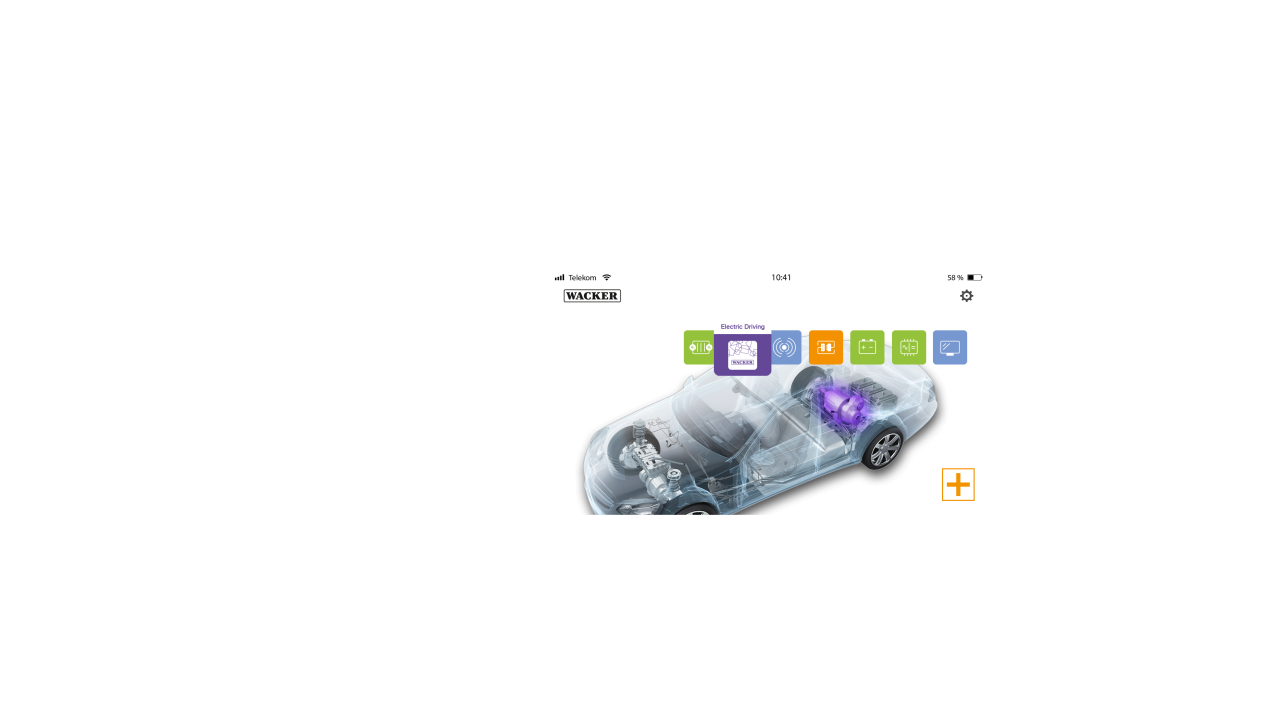
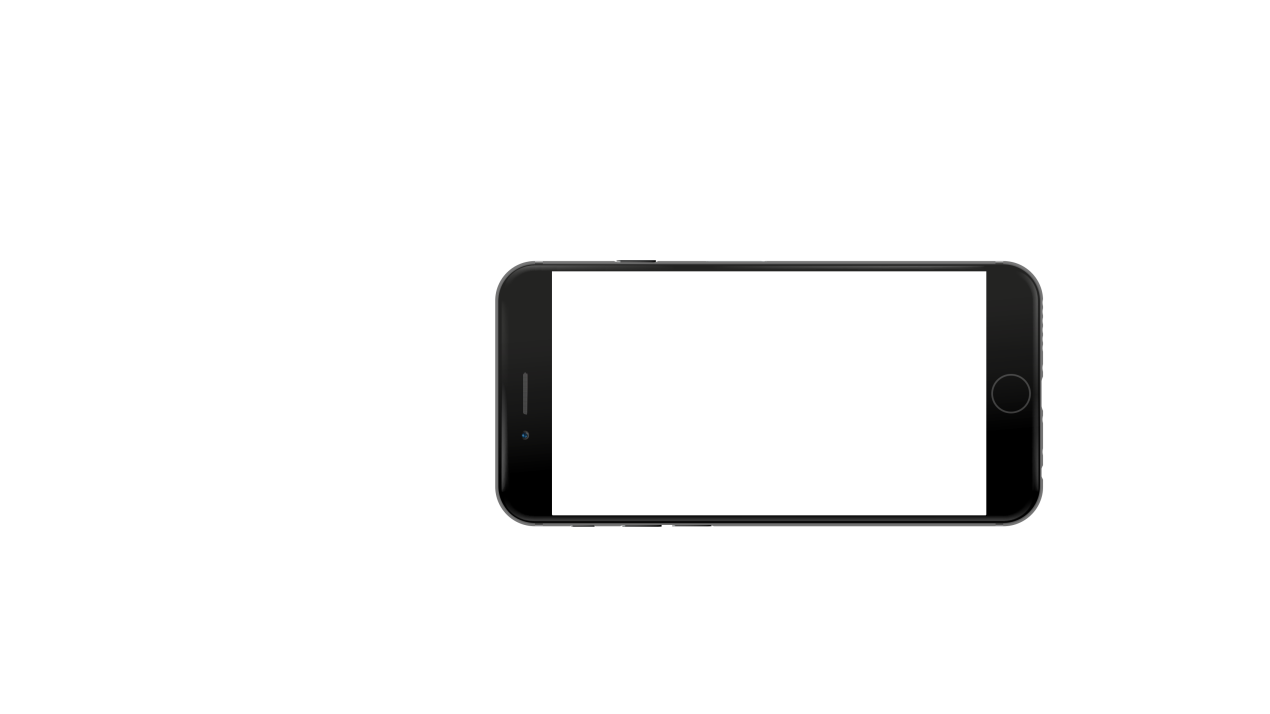
Navigating – AR assists orientation
Whether used for a factory tour, warehousing or just to show directions, AR makes it easy to find your way in the real world.
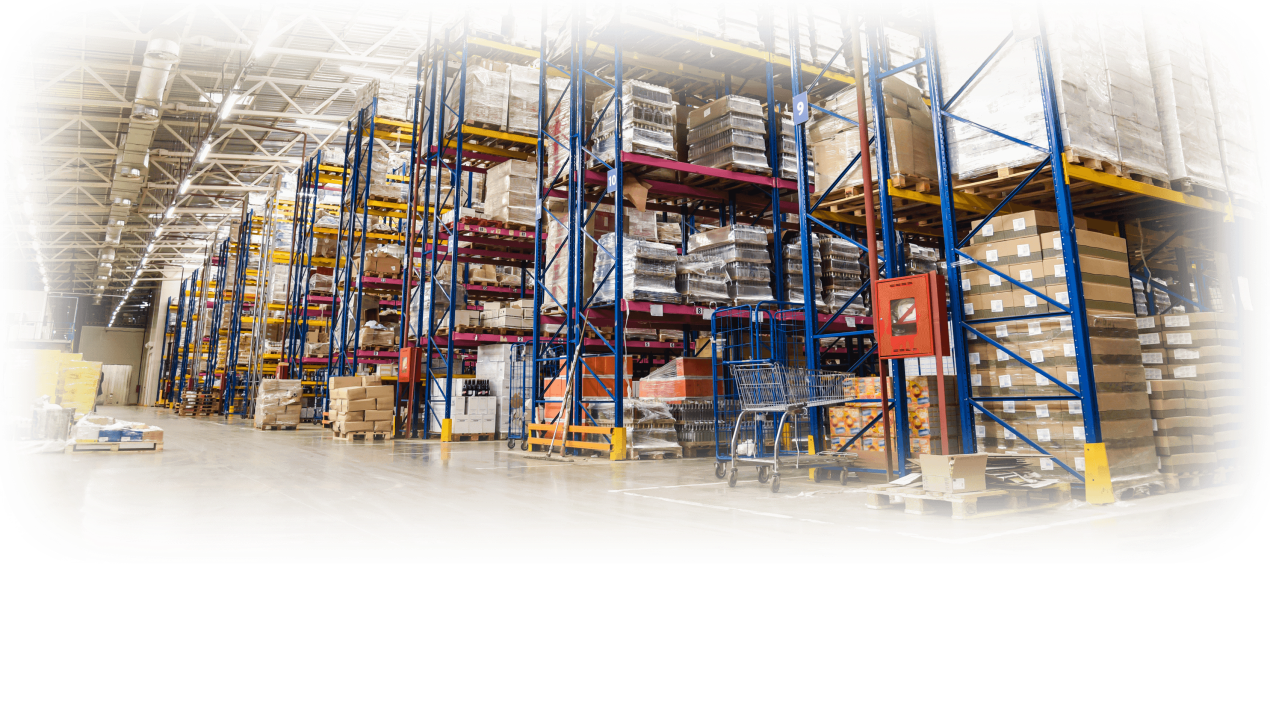
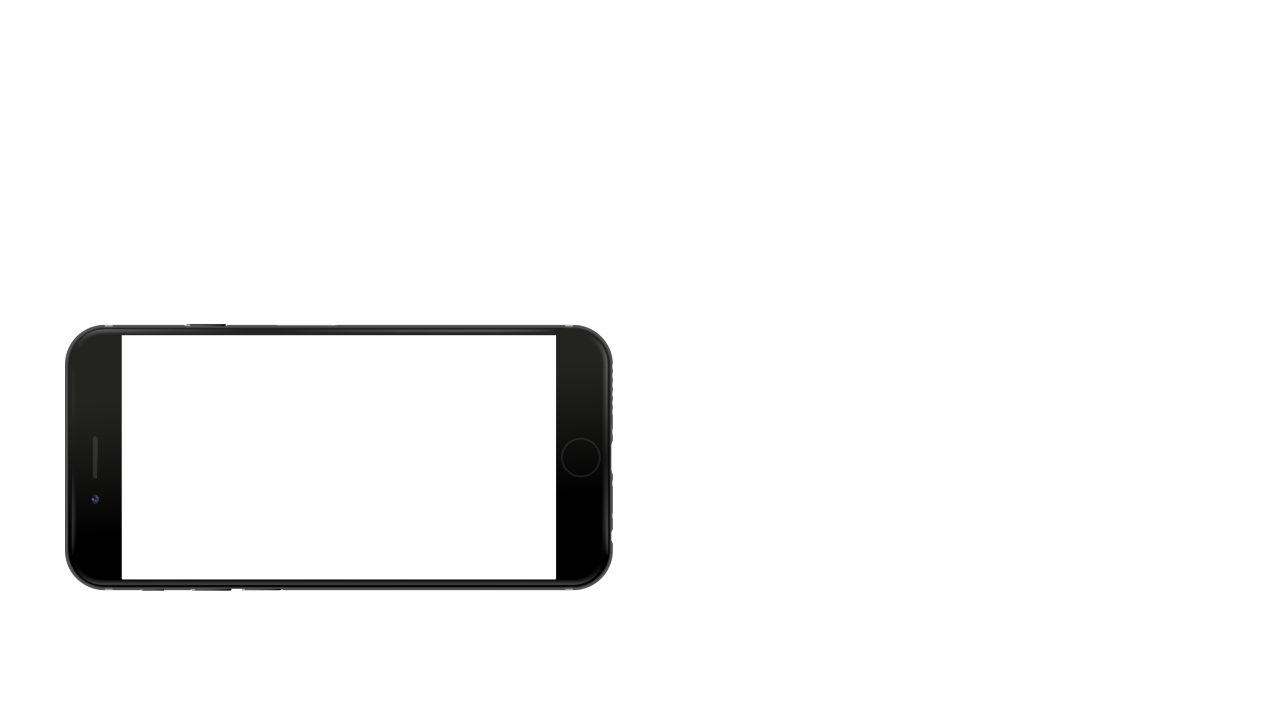
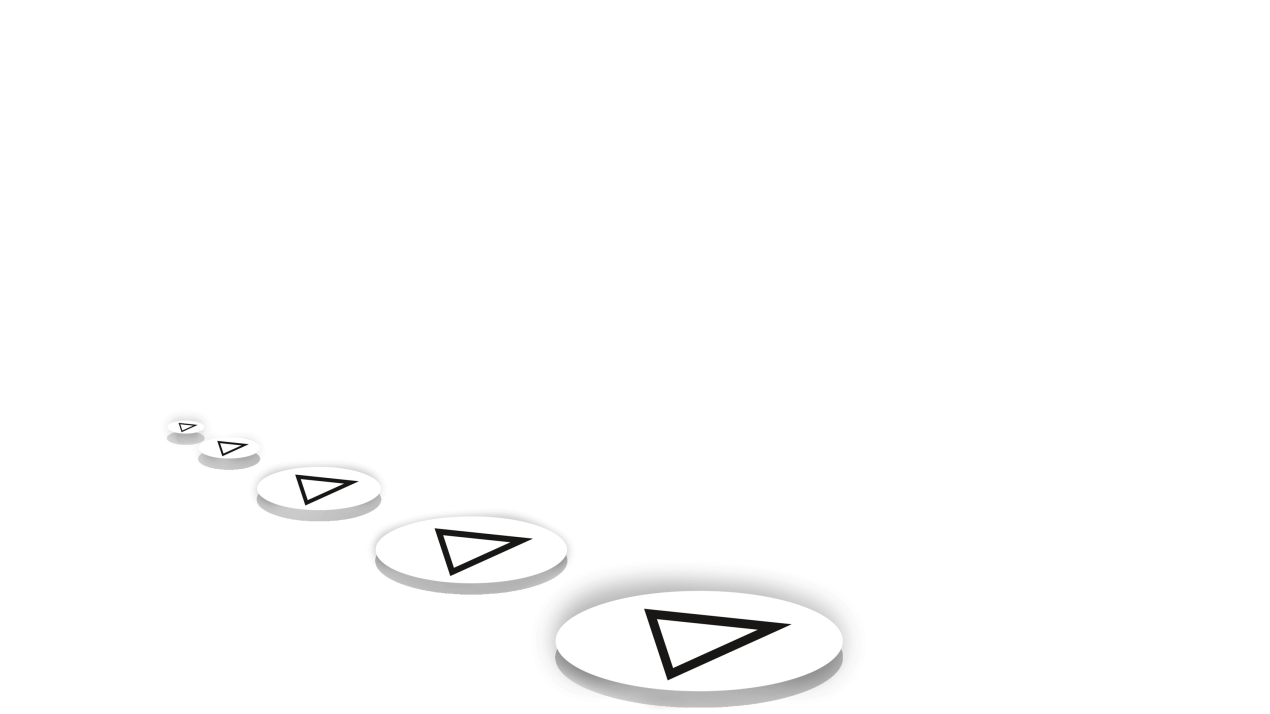
How is content delivered?
4
Using 3D objects – the classic application
Brochure images become three-dimensional, for example, by means of 3D models prepared from design data or newly created 3D objects.
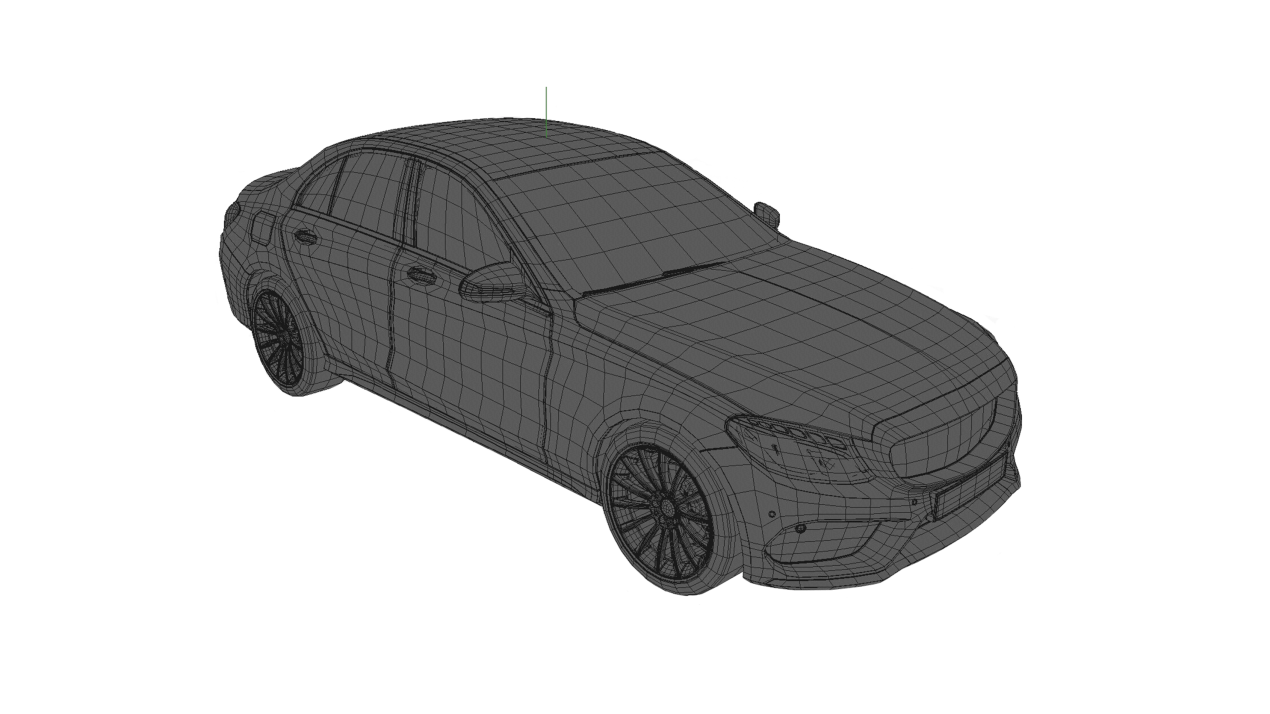
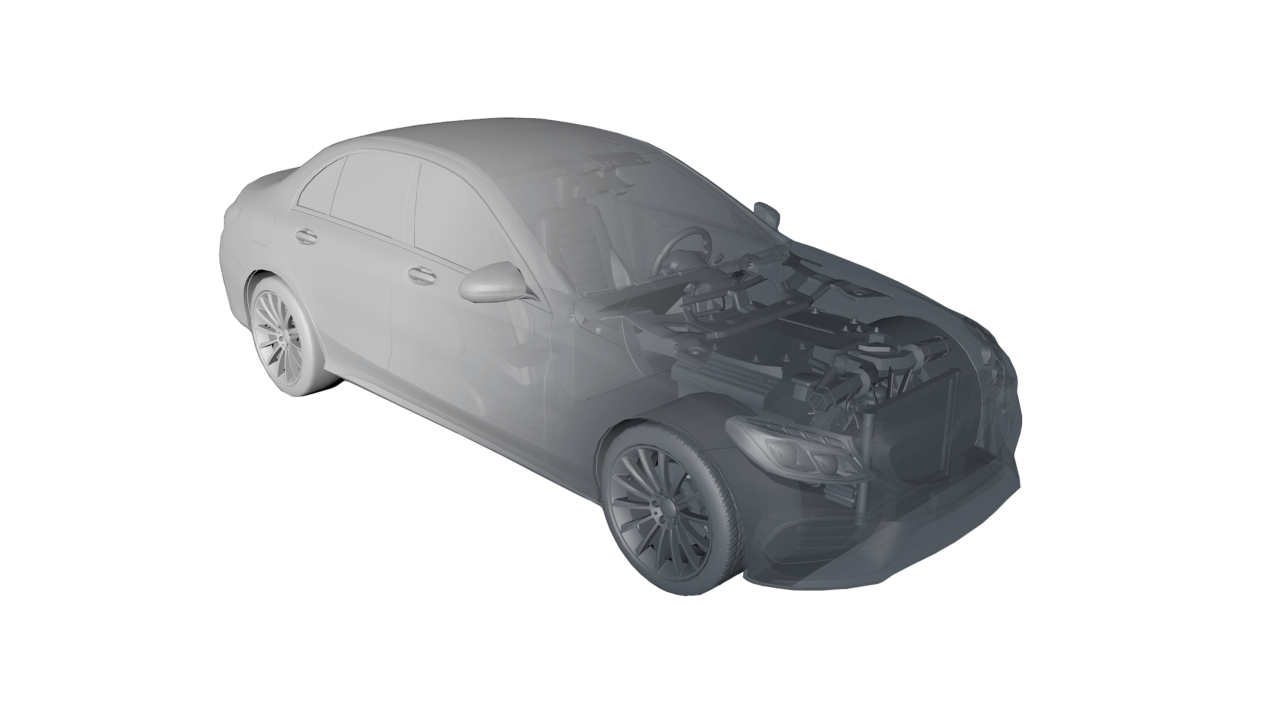
Using films – providing a link to reality
Integrating film material makes it possible to present information in a more compact and vivid way.
Using 3D animations – placing the presented object in a usage context
Linear animations are used to clarify complex processes.
Using texts, labels, icons and symbols
Microtexts and -graphics provide orientation and assistance and illustrate the immediate environment of the user.
Alternative realities
5
Augmented Reality (AR)
The user remains anchored in the real world, acquiring additional digital information through mobile devices.
More on our project pages:
Virtual Reality (VR)
The virtual world and the real world are strictly separate. The user wears a VR headset that covers their field of vision completely and immerses them in a virtual world – a parallel universe in 360 degrees.
More on our project pages:
Mixed Reality (MR)
This is a combination of AR and VR. Microsoft coined this term specifically for their HoloLens headset. The headset enables natural perception of the real environment while visualising virtual 3D objects, texts, images, films and animations.
More on our project pages:
